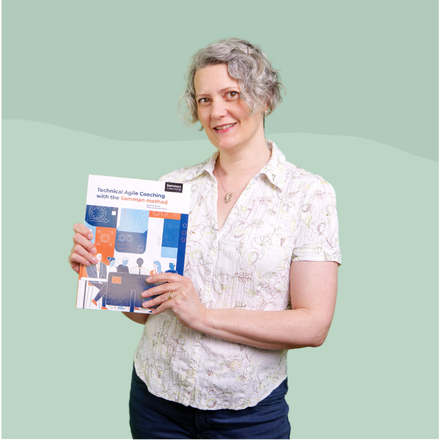Collaborative coding can be a fantastic forum for getting stuff done at the same time as learning programming techniques and getting to know other developers. I've been enjoying the recent Samman Society Ensemble sessions where we work on our website...
Team learning – beyond the blog
If you’re enjoying the insights shared here on the blog, you might enjoy my training too.
“Foundations of Software Craft” uses an innovative format, enabled by the modern internet and online collaboration tools. It works well for teams and individuals learning core coding skills for good design.
To learn more about this training, just click the link below.
Latest blogposts
Barbie
I very rarely go to the cinema, but this weekend I took my two teenage daughters to see Barbie. Mostly it was fun and silly but several scenes had me in tears. Now I want to go see it with my mother, actually. What really got me was the depictions of the different...
I’ve Gone Independent
After three years of close collaboration with ProAgile I felt it was time to strike out alone as an independent Technical Coach. I continue to recommend my former colleagues at ProAgile - if you're looking for an agile coach or some training in agile methods...
Hold an Open Space Event in just One Hour
This article was first published on ProAgile's blog With good facilitation, one hour is just long enough for a group to both create an agenda and have some interesting conversations on topics they’re concerned about. We at ProAgile have been holding these kinds of...
Samman Coaching in 2021
Photo by Designecologist from Pexels I am convinced that the world needs more technical coaches. Practices like Refactoring and Test-Driven Development don’t just happen by themselves. It takes quite an investment in time and effort for most developers...
Book Review: Practical Remote Pair Programming by Adrian Bolboaca
I’ve known the author for many years and actually did some remote pair programming with him in early 2020 which we published as a video. I’m confident Adrian is very skilled at both pair programming and working with distributed development teams. I was pleased...
What is important in your daily work as a software developer?
Originally published on ProAgile's blog That was the question I posed on Twitter yesterday. I got a huge pile of answers, some of them surprised me! This article is my way of thanking everyone for sharing their ideas. You can see the whole picture in...
Why we should be saying ‘Approval Testing’ instead of ‘Golden Master’
By Emily Bache There’s a frank discussion going on in the software industry at the moment about the words we use and the history behind them. Perhaps now is a good time to reconsider some of our terminology. For example, I’ve noticed we have several terms that...
Team Topologies
A book for managers, about architecture Ruth Malan re-stated Conway’s law like this: “If the architecture of the system and the architecture of the organization are at odds, the architecture of the organization wins”. As a technical leader, that really caught my...
Can you do Behaviour Driven Development with Approval Tests?
In BDD you discover what software you should build through a collaborative process involving both software developers and business people. BDD also involves a lot of test automation and tools like Cucumber and SpecFlow. But what would happen if you used an Approval testing tool instead? Would that still be BDD?

Hi – I´m Emily!
I am an independent consultant with Bache Consulting and chair of the Samman Technical Coaching Society. As a technical coach I work with software development organizations who want to get better at the technical practices needed to be agile, including Test-Driven Development, Refactoring and Incremental Design. I live in Gothenburg, Sweden, although I am originally from the UK. I’ve written two books: “Technical Agile Coaching with the Samman method” and “The Coding Dojo Handbook”. I teach for both O’Reilly and Pluralsight. I’m married to Geoff Bache, creator of TextTest. I am also on Mastodon as emilybache@sw-development-is.social.

If you’d like to know a bit more about me, my work, and the talks and workshops I offer, please visit my main website: EmilyBache.com. There, you’ll find information about my background, upcoming events, and the services I provide as a technical coach and consultant. It’s a good place to start if you’re curious about how I can support your team in improving coding skills and agile practices.

Practical Coaching –
Beyond the Blog
If you’re enjoying the insights shared here on the blog, you might enjoy my training too.
“Technical Agile Coaching with the Samman Method” offers a practical guide to improving how developers collaborate and write code. You’ll learn hands-on techniques for Test-Driven Development, Refactoring, and effective team coaching.
To learn more about the book, just click the link below.
Blog categories




